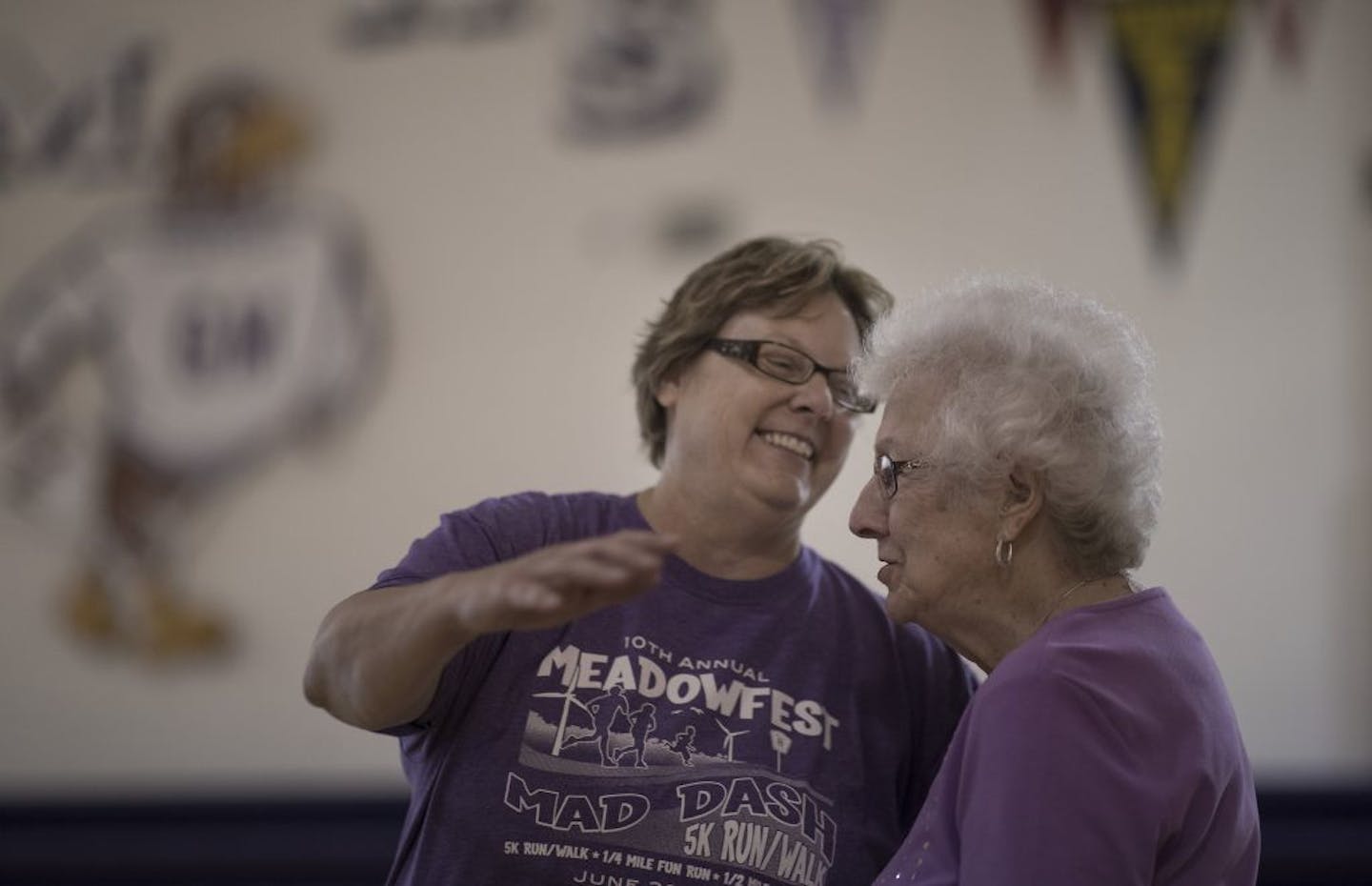Grand Meadow, Minn. – There's no sign on Mower County Road 8 into Grand Meadow to commemorate the greatness that existed more than 80 years ago in this small southern Minnesota town. Nothing that mentions the most amazing streak in Minnesota high school sports history. Few residents remain who can recall those days, from 1929 through 1939, and not many more have heard of it. But, for that 11-year period, the center of the girls' high school basketball world was a long-since gone opera house on Grand Meadow's Grand Avenue that doubled as a basketball gymnasium. It was there that the girls' basketball team entertained frequent sellout crowds by winning every game it played.
Fosston's girls' basketball team holds the modern Minnesota State High School League record with 78 consecutive victories from 1999 through 2002. Edina owns the boys' record, winning 69 straight from 1965 through 1968. Impressive, yes, but nothing compared to what Grand Meadow accomplished.
Playing in an era of 6-on-6 basketball (we'll get to that later), the Meadowlarks posted a jaw-dropping mark of 94-0 for the entire lifespan of the program.
And usually, it wasn't close.
In their first season in 1929, playing against towns in the area, the Meadowlarks outscored opponents 591-153 over a 14-game schedule. They defeated Lyle 68-8, Adams 51-6, LeRoy 52-8. Such blowouts became so common over the decade that followed that playing Grand Meadow became a grand pain for opponents.
"They were afraid to play us," said Beulah Ankeny, a 1936 graduate and former player.
"I think they were jealous," added Mae Gross, who was a junior on the 1938-39 team.
Beulah and Mae, both nearing 100, along with Hazel Peterson Blanchard and June Wright Kramer are the last four surviving players. Memories, understandably, are patchy. Individual games are difficult to recall but circumstances remain vivid, including the strong support the team received from the community.
"We drew quite a crowd," Beulah saidof the days when the versatile Opera House, which was also used for roller skating, school dances, graduation ceremonies and even livestock competitions, was in basketball mode.
"The girls played first. They said that after the girls played, the crowd went home," she said with a chuckle. "I don't know if that's true or not."
Players dressed at the school, then walked a block to the Opera House.
"In the dead of winter,'' said Beulah, 99, whose older sister Alvena also played for Grand Meadow. "We didn't have such a thing as a sweatsuit to put on. We just had our coats."
That block seemed much longer after games, Mae said. "It was cold. And we were sweaty in our shorts."
Girls' basketball thrived in Minnesota in those days. Teams were formed in the early 1900s, largely in small towns, where extracurricular activities were limited
"It was either basketball or band," Mae said.
Why basketball?
"I s'pose because we didn't have enough money for a band instrument," she added with a wry smile.
Historical references to Grand Meadow girls' basketball date back to 1911. But as far as anyone knows, the team itself was formed in 1929 when an English teacher named Lila Reiersgard became coach.
Quiet and determined, Reiersgard's focus on preparation became the foundation for the Meadowlarks' success. Her most significant contribution during her seven-year tenure were daily practices, largely unheard of in those days.
"A lot of schools, they only practiced one day," Mae said. "We had practice every night. Our coach was strict. She was there for a reason and that was the only reason."
Girls' basketball a century ago was a six-on-six game, with each team having three offensive players and three defensive players on each end of the court. No one was allowed to cross the half-court line.
Guards played defense only. Forwards were strictly offense. The style, which fit Grand Meadow perfectly, flourished in Iowa until 1993.
"We didn't run much because we couldn't go past the center line," said Mae, a guard in her playing days.
"But there was running in your area," interjected Beulah, also a guard. "And you had to jump, too, to keep the ball from going in."
Both marvel at the athleticism of today's players.
"It's much more strenuous than when we played," Beulah said. "I don't know how they do it."
Mae smiled. "It's too hard on women!" she said with a laugh.
Laughable now, sure. But the view that competitive sports were too hard on the female anatomy was the opponent that finally defeated the Meadowlarks.
Former teacher Dorothy McIntyre, who spent 32 years as an associate director for the high school league before retiring in 2002, was instrumental in returning girls' sports to high schools in the early 1970s.
"There were hundreds of [girls'] teams playing before 1942," said McIntyre, who co-authored "Daughters of the Game: The First Era of Minnesota Girls' High School Basketball, 1891-1942."
"Then, for all the wrong reasons, schools dropped the teams," she said.
The significance of athletics and physical education was still being determined in the early 20th century. In the 1920s, the National Amateur Athletic Federation was created to study and make recommendations about athletic participation. It was split into boys' and girls' divisions, the girls' led by Lou Henry Hoover, whose husband became U.S. president in 1929.
Concerned that girls' sports were adhering too closely to the boys' competitive sports model, the federation in 1931 outlined steps to promote the overall physical health of women and girls, and diminish participation in competitive sports. Many in physical education and medical communities believed that females weren't built to withstand the rigors of competition. Some said strenuous activity could damage a woman's ability to have children.
"The NAAF contacted departments of education across the country," McIntyre said. "Over four or five years, the superintendents began hearing from these groups of educators. Schools began dropping basketball in the early '30s. More and more dropped basketball until teams had a hard time finding teams to compete against."
Grand Meadow, its pool of opponents dwindling, finally succumbed after the 1938-39 season. Girls' basketball was dropped, players and coaches having never tasted defeat.
"We were mad," Mae said. "We had to be cheerleaders for the boys teams. But back then, you couldn't do anything about it."
By 1942, there were no girls' high school basketball teams left in Minnesota. It would be more than 30 years, in the wake of Title IX legislation, before competitive girls' sports returned.
McIntyre stressed that pressure to drop basketball was gender-neutral. "Men get blamed, but the bulk of the strong leadership [in NAAF] was women," she said.
As for the concerns about the dangers to child-bearing?
"I had two children," said Mae, who taught in the Grand Meadow school district for 33 years.
Added Beulah, with a laugh: "I had six."
For years, the Grand Meadow girls' accomplishments went unheralded, even while they were winning.
"There wasn't a lot of hoopla about it when we were playing," Mae said.
Beulah agreed. "We didn't get any attention, really."
Many years later, the team photo of the 1938-39 team was discovered, gathering dust under a stairwell.
"They didn't even know it was there," Mae said.
The Meadowlarks' accomplishment was honored in 1992 at the state capitol on National Girls and Women in Sports Day. Then last March, the 1929-39 dynasty was among the inaugural group of inductees in the newly created Minnesota High School Basketball Hall of Fame.
Before Beulah represented the team at the induction ceremony in downtown Minneapolis, a seemingly endless stream of well-wishers and admirers made their way to her table. Afterward she posed for pictures with fellow inductees like Janet Karvonen-Montgomery, Lindsay Whalen and McIntyre.
As she did when she played, Beulah took the attention in stride.
"Naturally, we're proud of our record," she said. "But I don't think it went to our heads. It was just a fact of life."
Would they have preferred the recognition earlier?
"No," Mae replied. "I think right now is good."






